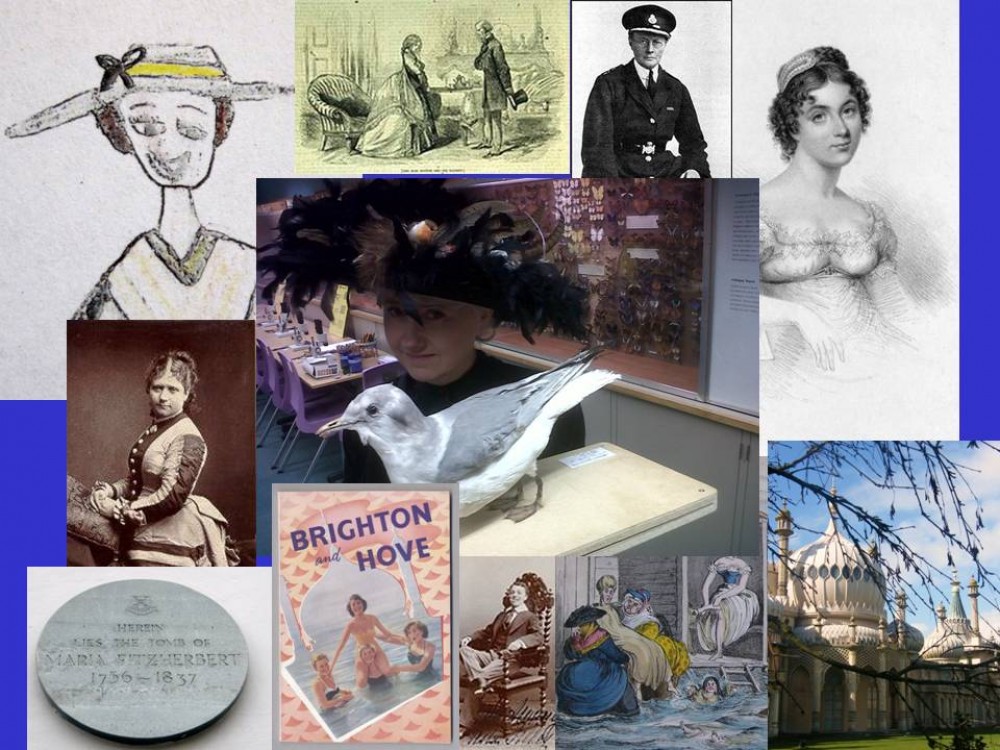Fancy a piece of ‘Savoury Pudding’?

This optimistically named dish was made by Preston Manor Creative Programme Officer, Paula Wrightson, in her search for authentic, everyday meals eaten during the First World War. A stodgy and relatively cheap combination of oatmeal, flour, suet and eggs that must really not have left the 1914 diner wanting more, its flavour can be summed up, Paula says, as ‘astonishingly bland’. The pudding will be making a star appearance at Preston Manor every Friday in August from 8th as part of the ‘1914 House’ event, an intriguing house tour around the Manor which despite partly dating from the seventeenth century, lived through its golden years in the Edwardian period and was very much a functioning home during WW1. In 1914 the residents included Brighton power couple Ellen (below) and Charles Thomas-Stanford…

Charles was an MP and had been mayor. Ellen had inherited the Manor as well as the huge tranche of the town that made up the Stanford estate. The outbreak of the war saw them in Preston Manor with their 10 servants (photo below shows a handful of servants in 1920).

By giving a close look at the residents of the Manor, their daily activities and the way they lived, the tour pieces together a fascinating picture of everyday domestic life that formed the backdrop of this most momentous year. If you’re interested in the little details – the small change of life, as it were – that tend to fall down the sides of the usual official histories with their dates and important events – this is for you. Not only food but cleaning products, grooming routines, toilet roll, toothbrushes, and the astonishing array of class A drugs that formed the acceptable and completely legal medicine cabinet are all covered with a vengeance by Paula and guide/lecturer Sarah Tobias. In her quest to leave no stone unturned, Paula has even acquired a bottle of the must-have perfume of the day (Guerlain’s L’Heure Bleue – “fragrance of bluish dusk and anticipation of night” – how grimly right Guerlain’s marketing people were in summing up the spirit of the times) that the wealthier women of the time would have aspired to.

…So not only will we know what 1914 looked and sounded like but also what it smelled like. (Tasted like maybe not so much. In spite of what will no doubt be high demand Paula’s savoury pudding can be looked at but not eaten – sorry.)
What I like about the sound of this event is that it is so unashamedly domestic. At a time when the big things about the conflict – trench warfare, the politics, the technology, the harrowing statistics – are being widely covered, it’s easy to overlook that in Brighton, as in many other thousands of towns in Britain, some sort of life was having to go on as normal. People still needed to be fed, hair to be brushed, shoes to be polished, coughs and colds to be attended to. More often than not, this was still women’s work. We all know how the First World War flung women into the world of work as never before. Women were conducting trams, working in munitions factories, engaged in previously male territory such as farming and policing. All well and good, but, for the most part, they still had houses to run, children to care for, and the usual domestic chores that weren’t going to sit around and wait while they got on with their new ‘careers’. Juggling ever more responsibilities in ever straitening conditions (the cost of living rose by 87% between 1914 and 1915) – as well as holding down a job – probably didn’t feel like a great leap forward for the women struggling to keep the home fires burning. This tour I think will give us a glimpse of what it must have been like to stand in their shoes.
Through all this I can’t help thinking about my own great grandmother, Ellen Bramley from Birdwell, a mining village in South Yorkshire. Gentle, quietly-spoken yet uncannily steely (she remains the only person in the world who has ever succeeded in making me eat cabbage) she spent the war suffering in great penury as a single mother, taking in other people’s laundry and doing what work she could find. She didn’t lose her young husband on the battlefield but in one of the many mining accidents that happened with shocking frequency in South Yorkshire back then. I remember her house in the 1970s – her fridge always packed with bowls of dripping, tiny slivers of leftovers that she would never throw out, gravy made from the meat, home pickles and jams, plus the ubiquitous cabbage laid out on a plate as if for a banquet.

Thanks very much to Paula Wrightson for the pudding photo and much of the information for this post.
‘1914 House’ takes place at Preston Manor, Preston Drove, Brifghton, BN1 6SD on Fridays 8, 15, 22, 29 August 2014 11am–12.45pm & 2–3.45pm £15. For bookings call 03000 290900
(NB. This post isn’t in any way an advert for the event. I’m writing about it because it just looks good!)

